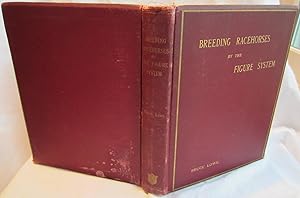Thoroughbred Breeders Handbook Harper
Shop for Books on Google Play. Browse the world's largest eBookstore and start reading today on the web, tablet, phone, or ereader. Go to Google Play Now ».


Very Good: A book that does not look new and has been read but is in excellent condition. No obvious damage to the cover, with the dust jacket (if applicable) included for hard covers. No missing or damaged pages, no creases or tears, and no underlining/highlighting of text or writing in the margins. May be very minimal identifying marks on the inside cover.
Very minimal wear and tear. See the seller’s listing for full details and description of any imperfections. Format: Hardcover Author: Clive Harper Language: English Year: 1997 Publication Year: 1997.
Thoroughbred Breeding – Pedigree Theories and the Science of Genetics (Binns and Morris) is a book worth reading. A friend recently gave me several boxes of books on breeding racehorses. A number of these books are cited in this book of Binns and Morris, and the theories dismissed on scientific grounds. For someone looking at the selection of stock for breeding and racing, is a great place to start. Binns and Morris use modern science to provide an evidence base by which to disprove many breeding theories, including those of Bruce Lowe, Harold Hampton, and Sir Rhys Llewellyn. While the book gives very little guidance in terms of strategies that are proven, its real value is in clarifying the relative merit of various breeding theories, with some discussion of line breeding and inbreeding.
Sap Business One License Keygen. A major oversight, in my view, is the absence of any analysis of the work of Clive Harper, who wrote. Harper analysed the pedigrees of a number of stakeswinners in New Zealand, and compared them with the pedigrees of a group of maiden horses, and found some extraordinary differences in terms of duplicated ancestors in pedigrees. Harper’s work was scientifically valid, yet Binns and Morris appear to have overlooked it entirely. Another issue with this book is that Binns and Morris suggest that racing performance is only 1/3 attributable to pedigree/genetics and 2/3 to environment/training. Anyone who has trained horses for a while knows that good horses are extremely hard to come by, and that when they do, it doesn’t take a great trainer to be winning races.
In my view, a well-bred horse counts for a lot more than 1/3 of racetrack performance. Aside from those couple of observations, is critical reading. It can be purchased here: The Fit Racehorse II (Tom Ivers) There are quite a few useful books on training racehorses. A must-read for racehorse trainers around the world is. Ivers turned the racing industry on its head with this comprehensive work, in which he denounces the general poor quality of exercise regimes, diagnostics, use of medications, and feeding protocols.
It is difficult to disagree with Ivers on much of his analysis. The primary challenge presented by the book concerns the topic of interval training; whether, and to what extent, trainers should consider incorporating elements of interval training into their horses’ exercise programs. Ivers recommends a “long and slow” to “short and fast” program for horses, which is the reverse of many typical routes to racing. Torrent Code Quantum Saison 2 Game more. Some months of long slow distance (LSD) of at least 3-4 miles per day is followed by a series of interval workouts, gradually increasing in speed up until racing speeds and distances prior to going racing. This thinking is anathema to many racehorse trainers. It requires a lot more work, a lot more risk of injury, a lot more feed and lot more patience. However, Ivers cites a number of successful horses such as the Irish galloper (who won the Japan cup) that have benefitted from an interval training protocol.